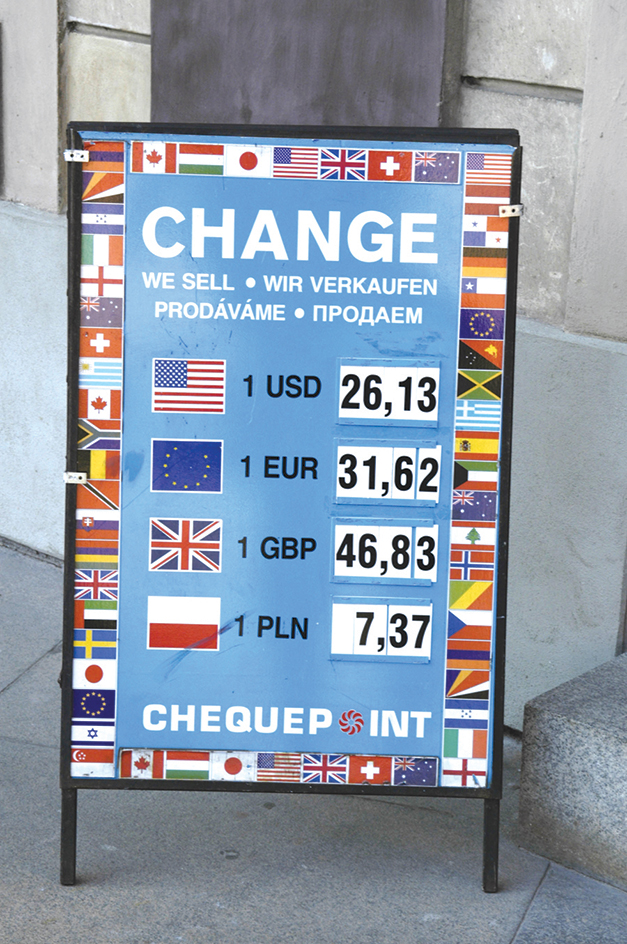Exchange rate is the price of one nation’s currency expressed in terms of another nation’s currency. An American who buys a product from a company in the United Kingdom might have to pay for it in British pounds. The American would exchange dollars for pounds at the current exchange rate. For example, if the rate were $1.25 to the pound, the American would pay $25 for a British sweater that cost 20 pounds. If Americans bought more British products, the demand for pounds would increase and the pound would rise in price against the dollar. Thus, if the pound rose to $1.50, the American would have to pay $30 for the sweater.

From the late 1800’s to the early 1900’s, most major trading nations had their own fixed exchange rates under a system called the international gold standard. The governments of nations on the gold standard guaranteed to redeem their currency for a specified amount of gold. In the early 1900’s, for example, the dollar was valued at about 26 grains (1.7 grams) of gold, and the pound at about 126 grains (8.2 grams). The exchange rate of the pound was thus fixed at about $4.85.
Most nations abandoned the gold standard during the 1930’s. In 1944, representatives of 44 countries met at Bretton Woods, New Hampshire, and agreed to adopt an alternative fixed exchange rate system called pegging. Under the Bretton Woods system, a government bought and sold enough U.S. dollars in exchange for its own currency to keep the exchange rate steady. If the Japanese yen fell, the Japanese government used its reserves of U.S. dollars or other international money to buy yen. The resulting increase in demand for yen caused the price to climb again, keeping the exchange rate pegged at the desired level.
Since the early 1970’s, the major trading countries have had floating exchange rates. With such rates, the price of a nation’s currency rises and falls in relation to world supply and demand for that currency. Actually, however, most governments intervene if the exchange rate for their currency rises or falls too far. For this reason, the system is often called managed floating.
People buy and sell foreign currency through banks and special brokerage firms. The current price of a currency is called the spot rate. Banks and brokers also buy and sell contracts for the future delivery of currency at a price called the forward rate. Many newspapers publish daily reports on the spot and forward rates of major currencies.
